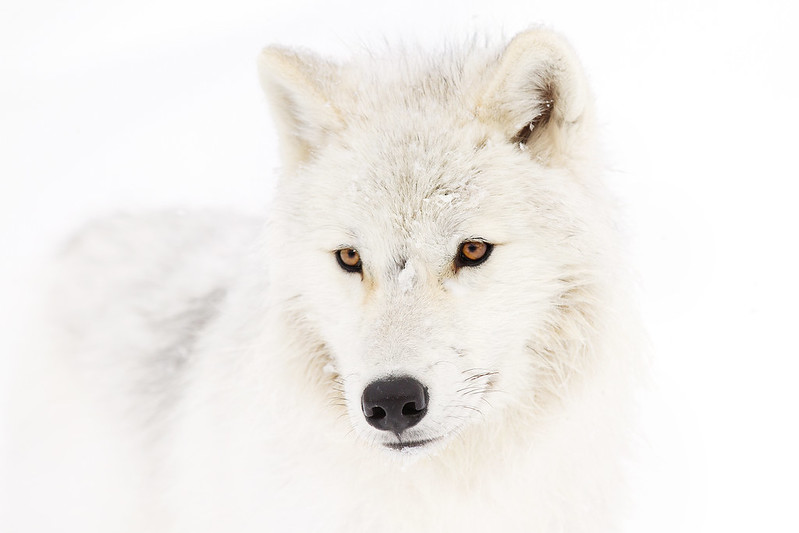Press Release
Expects a decision regarding the future of the Program in early 2015
November 20, 2014
Contacts:
Tom MacKenzie, USFWS
404-679-7291
Tom_MacKenzie@fws.gov

A red wolf Credit: Becky Bartel / USFWS
The U.S. Fish and Wildlife Service today released a 171-page,
peer-reviewed evaluation of its Red Wolf Recovery Program’s
non-essential, experimental population in five Eastern North Carolina
counties.
Brief statements from Steve Williams, president of The Wildlife
Management Institute; Leopoldo Miranda, assistant regional director for
ecological services in the Service’s Southeast Region; and Gordon Myers,
executive director of the North Carolina Wildlife Resources Commission,
are included below.
The evaluation is one action among several that are part of a
broad agreement between the Service and the North Carolina Wildlife
Resources Commission put in place in late 2013. Both agencies
recognized that some steps were needed to improve management of the
non-essential, experimental population in Eastern North Carolina, which
was established under Section 10(j) of the Endangered Species Act and is
a component of the overall recovery effort for the red wolf.
As the Service indicated in August when it announced a review
would be conducted this fall, the evaluation will be used with other
information to help the agency address deficiencies and determine the
program’s future in Eastern North Carolina.
A broader announcement on that overall decision is expected in early 2015.
The evaluation, the agreement with North Carolina, and the Service documents used for the evaluation are currently available at
fws.gov/redwolf/evaluation.html. A recording of today’s press conference also will be posted there.
Steve Williams
Wildlife Management Institute
“Agencies interested in improving their conservation programs
often reach out to independent reviewers to evaluate the success of
their programs,” said Williams, the report’s chief author. “In this
case, the Fish and Wildlife Service asked the Institute to conduct just
such a review. The findings and conclusions contained in our report
cover a wide range of issues grouped under the categories of science,
program management, and human dimensions. The Fish and Wildlife Service
has a clear understanding of the science involved in the restoration of
the most endangered canid in North America. Its introduction of
captive red wolves into the wild has proven successful.
“Our review looked at 28 years of the recovery program. As with
all programs, hindsight is 20/20. WMI concluded that the recovery
program management could have been improved if a more interdisciplinary
approach was used to better respond to public concerns and information
needs. We also concluded that the rules established for the recovery
program were not always followed. However, we believe that Fish and
Wildlife staff acted in the best interest of the red wolves and the
public with whom they were working.
“Finally,” Williams concluded, “the Fish and Wildlife Service
must do a better job of understanding the human dimensions of this
program at the local level. The recovery of red wolves is a complicated
and difficult process. We hope our conclusions will assist the Fish
and Wildlife Service in its deliberations about the future of the
program in North Carolina.”
Leopoldo Miranda
U.S. Fish and Wildlife Service
Southeast Region
“I want to thank WMI and the independent peer reviewers for their
work to complete this program evaluation within our time-frame,”
Miranda said.
“The evaluation is critical of the Service’s management of the
recovery program non-essential, experimental population in North
Carolina,” Miranda added. “We’ve begun a detailed review of the
evaluation and take its critical analysis seriously. The Institute
covered many topics to meet our request and we will take some time to
carefully review it. Even as we move forward with that review, I also
want to say that earlier this year we recognized an immediate need for
corrective action in an area related to the introduction of red wolves
on private lands as part of this population, which the report affirmed.
At this time, we are stopping the practice of relocating red wolves to
private lands. If, in the future the Service wants to relocate red
wolves on private property, it will only do so if it has written
agreements in place.
“We have a lot of work in front of us and I also want to note
here that we appreciate all of the public engagement this process has
generated,” Miranda said.
Gordon Myers
North Carolina Wildlife Resources Commission
“We appreciate the focused and deliberative action the Service is
directing to evaluate its Red Wolf Program,” Myers said. “This report,
which stems from collaboration between the Service and the Commission,
is a high priority action item that will inform future decisions about
that program.”
source



